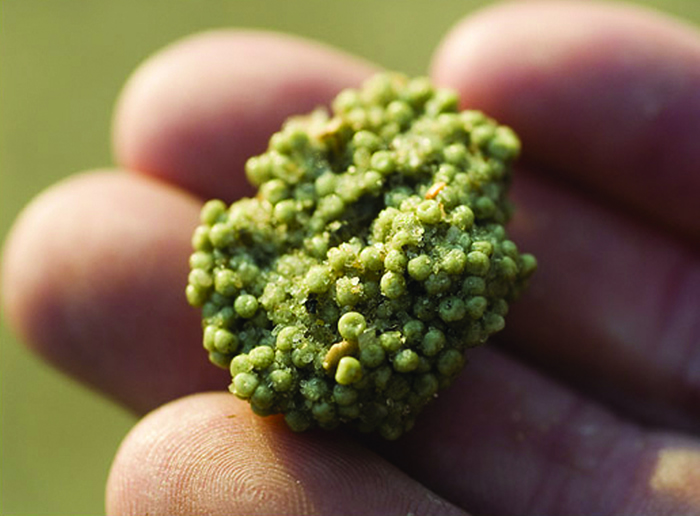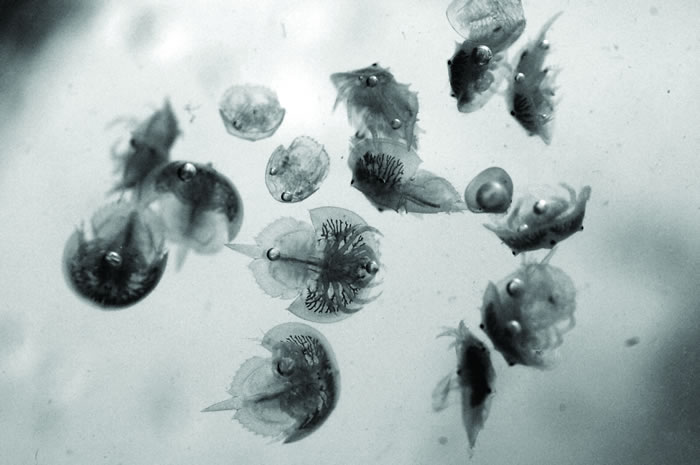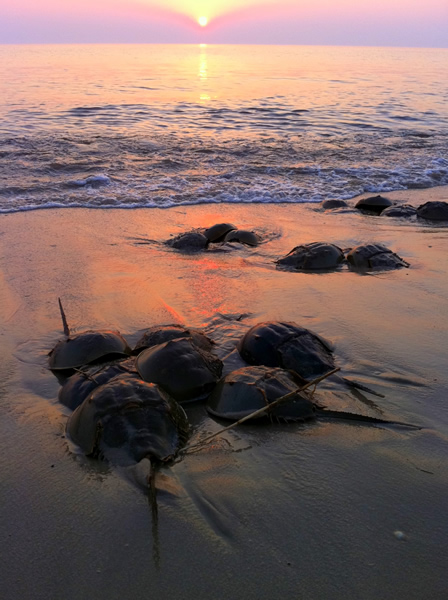Horseshoe crabs (Limulus polyphemus), known as “living fossils”, have remained relatively unchanged for roughly 350 million years. The largest concentration of spawning horseshoe crabs in the world is found in the Delaware Bay. For decades, The Wetlands Institute has brought scientists and volunteers together to survey spawning horseshoe crabs on the Delaware Bay beaches. These spawning surveys take place during May and June each year and contribute to coordinated efforts central to our understanding and responsible management of this important population.
Watch our new video and learn how we are working with partners and volunteers to save horseshoe crabs through our research and conservation efforts.
Related Pages:
Threats to Horseshoe Crabs
The Delaware Bay population of horseshoe crabs experienced a substantial decline resulting primarily from overharvest and worsening condition of nearshore habitat and spawning beaches. Crabs face the risk of stranding when they get overturned by waves or stuck in hazards on the beach while coming ashore to spawn. During typical spawning activity, an estimated 10 percent of spawning crabs succumb as a result of stranding, and it is likely that stranding mortality is now even greater due to erosion of beaches from rising sea levels and storms.

reTURN the Favor
The Wetlands Institute is the lead partner in the reTURN the Favor program, which was formed in 2014 to organize volunteers to reduce the loss of stranded crabs. Each season, trained volunteers conduct walks to rescue stranded crabs and record important details about the beaches to contribute to the conservation of the Delaware Bay ecosystem. Collectively, reTURN the Favor volunteers have saved over one million crabs since the program began, have identified stranding hazards on the beaches, and have even tackled some of these problem areas through localized restoration projects.

Ecological Role
Many species within the local ecosystem are affected by the horseshoe crab population, as the crabs play a significant role in the food web. Their eggs and larvae are food for many species, including fish, reptiles, and birds, but the horseshoe crab’s most important ecological role is their connection to the survival of migratory shorebirds. Each May, hundreds of thousands of shorebirds make a stopover on the Delaware Bay beaches on their way from South America to Arctic breeding grounds, timing their two-week rest to coincide with spawning season for horseshoe crabs. In order to complete the long-distance migration, which can exceed 9,000 miles, shorebirds rely on nutrient-rich horseshoe crab eggs to double their body weight and replenish depleted energy reserves. As the number of horseshoe crabs has declined, so has the availability of eggs for consumption. Shorebird populations that rely on the food source are also plummeting, especially the federally threatened Red Knot (Calidris canutus).

Horseshoe Crabs and Human Health
In addition to being essential to the ecosystem, horseshoe crabs also play a critical role in human health and have directly impacted most people alive today. A solution called Limulus Amebocyte Lysate (LAL) produced from the blood cells of horseshoe crabs is used to test for the presence of bacteria in injectable drugs, vaccines, and implantable devices.
Click here to read an article published in the New York Times discussing the relationship between shorebirds and horseshoe crabs.

The Wetlands Institute is a leading partner in the multi-partner reTURN the Favor program. This program works to rescue overturned or impinged Horseshoe Crabs stranded on New Jersey’s Delaware Bay beaches. Though this program works to rescue Horseshoe Crabs on beaches open to the public, it primarily concentrates on rescuing crabs stranded on beach areas seasonally closed during shorebird migration and the Horseshoe Crab spawning season occurring in May and June.

